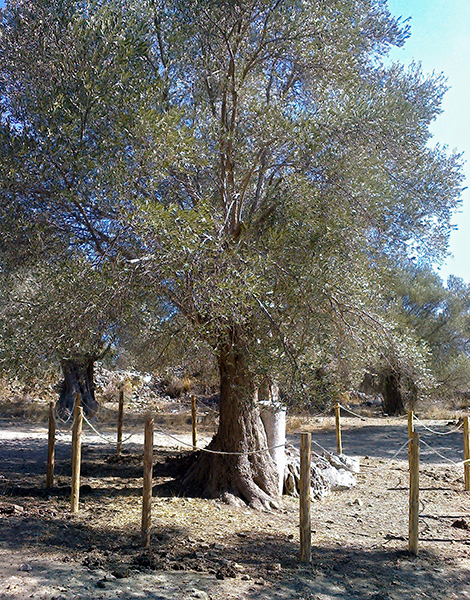One day about 3,000 years ago, at a time when the Minoan civilization still ruled over Crete and long before the rise of Classical Greece, an olive fell to the ground in the area of Vouves. Or perhaps it was deliberately planted there by a human hand. Whichever the case, that olive seed sprouted and grew into a tree. And incredibly that tree is still alive today – and still producing fruit – one of the so-called ‘monumental olive trees’ of Crete.
Overall 14 such ancient olive trees scattered throughout the island have been classified as monuments by the Association of Cretan Olive Municipalities (ACOM). The aim of the association is to protect the trees as living monuments of Crete’s cultural heritage and to promote them as attractions.


“Estimating the age of olive trees based on the stump rings, as usually done with other trees, is not easy. If the circumference is more than ten meters, then the tree is certainly very old. To put it in context, the circumference of a modern-day tree trunk is from half to one meter”, says the agronomist Nikos Mihelakis, an olive tree researcher and scientific consultant at ACOM.
Many of these trees are now popular draws for visitors to the island who come to admire their massive, gnarled trunks. Over the years painters, religious leaders, olympic medalists and heads of state have visited some of the most famous trees such as the Azorias in Kavousi, or the olive tree of Vouves. Near the latter, a small museum has been created, dedicated to the practice of olive cultivation.

A 3,000-Year Relationship
The trees provide a living testament to the millennia-old practice of olive cultivation on Crete. The history of olive cultivation dates at least back to the Minoans who gathered and treated and produced oil for export helping to enrich the kingdom. Thanks to its bounty, the olive tree was revered as a sacred gift from the Gods. Aside from being a staple foodstuff, olive oil was also used in the production of perfumes and medicines.
Since then, the trees have become associated with countless legends, traditions, festivals and customs, being an integral part of Cretan life. And that life was not always peaceful. According to Mihelakis, people even once used the massive trees to hide from the enemies. “[They would] meet and discuss inside the hollow of the olive trees during the Ottoman and German occupations,” he says.
Meanwhile at the site of the ancient city of Gortys, the deep bond between Crete’s olive trees and its history is embodied in a single image: here a Roman column has been embraced by the growing root of an ancient tree.












